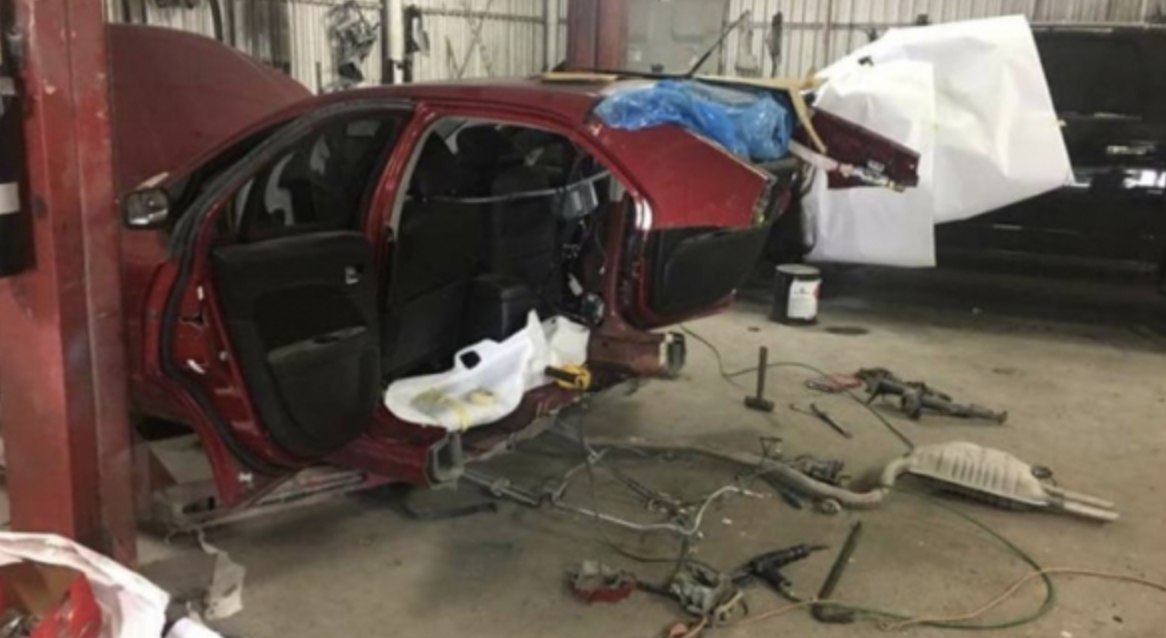Modern collision repair estimates, when done accurately, can contain as many as 4,000 lines. It’s a long way off from the “remove, repair, replace, paint estimates of a decade ago. Things get further complicated if you are comparing an estimate from a high quality auto body shop like 3D Collision Center versus a national auto body shop chain like a Caliber Collision or a Gerber that just does the minimum amount of work required to make a panel straight and shiny and do it as fast as possible.
One confusing line item for many people on their auto body repair estimate is the difference between “sectioning” and “partial part replacement”.
Sectioning was once a very common place procedure where an entire section of a damaged car was cut out and a new section from another car was welded in. As an example, if your car was rear ended, it was often faster to just cut the back half of the car off and weld in a used back section from a car out of a junk yard.

At 3D Collision Center we are horrified that shops still do this and get away with it. It is truly a barbaric auto body repair procedure and renders the vehicle horribly unsafe to drive.
But sectioning has a new meaning today. With I-CAR Gold class trained technicians we know that some of the manufacturer’s procedures call for sectioning and they may also call for partial part replacement.
Factory seams are where two parts or two panels are welded together during vehicle assembly using spot welds, rivets, fillet welds, etc. When these areas become damaged in a collision they have to be removed and replaced somehow.

Partial part replacement is defined as replacing a part at a factory seam. This requires removing the original attachment method to disassemble an assembly at a factory seam. When this is done, the factory seam sealer is removed and eventually replaced and new welding is introduced to the panel. Various areas of your vehicle are made of many different types of steel or even aluminum and each one reacts differently to heat. When a partial part replacement is allowed by the manufacturer, then we know it is ok to weld the new panel together at the factory seam, or join the two together with rivets or other boding methods as dictated by the manufacturer.

Sectioning is defined as the process of cutting a portion of a part out and replacing the damaged portion. What is worth noting is that this does not happen at the factory seam and could even be halfway down the part. This sectioning location is pre-determined by the vehicle maker procedures. Some vehicle manufacturers offer multiple sectioning locations for a part.
When sectioning a part, the technician will cut “section” out of the part, containing the damage. It is important to note that this process will create a new repair joint, and a seam that the car did not come with originally. Most likely you will not see this seam as it will be covered by the outer body panels.

This does not mean that your car is no longer safe to drive after the repair. In fact it means the opposite, if we are doing any sectioning on your vehicle, it is only because the OEM manufacturer tells us that we need to do this in order to properly repair their vehicles. At 3D Collision Center we spend hours researching the manufacturer procedures, and we also document the repair in detail.
Before performing any repairs we always perform a destructive weld test. We do this to make sure that our welder is properly set up to do the welding on your specific car, and the welds pass a destructive weld test. Not every body shop in Oxford does this which is why we are confident in saying that you won’t get a more factory correct repair in Oxford than you will right here at 3D Collision Center.
We have 7 different locations across Delaware, Chester, and Montgomery Counties. Feel free to give us a call at anytime at (877)-692-7776. For a list of the phone numbers for each of our locations or to schedule an estimate, click here.





